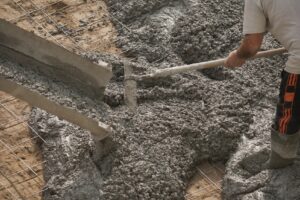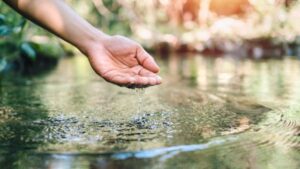General Contractors Richmond VA are responsible for turning the renderings and construction plans of architects, engineers, and interior designers into reality on the building site. They are also a critical part of the payment chain, which moves money from property owners to subcontractors and suppliers.
When choosing a GC, you’ll want to look for references and check their licenses. You’ll also want to ensure that they’re insured.

In some countries, general contractors are required to obtain a license before they can perform work on construction sites. This is done to ensure that they are legitimate and have the skills needed to complete a project correctly. In addition, a licensed contractor will have access to tools and equipment that may be necessary for the job.
Typically, a general contractor will manage the construction process and supervise various additional contractors, including specialty contractors. This person will often be in charge of hiring, purchasing materials, completing inspections and ensuring that the project stays on budget. It’s important that a GC is able to handle all of these tasks in order to keep the project running smoothly and meet its deadlines.
A good general contractor will understand that they’re there to make a client’s vision come to life. It’s also important that they are able to communicate effectively with the clients and are willing to listen to their feedback. It’s also essential that a GC is able to solve problems that arise on the site, as this will save time and money.
Most traditional general contractors will be responsible for a variety of different types of projects. They may have their own employees or may work with subcontractors to do the actual construction. These projects can include everything from constructing new buildings to renovating existing ones. Some may even involve demolition and excavation, so it’s important that the GC can be prepared to deal with these issues if they are going to be working on a large scale.
In addition, a general contractor will be in charge of scheduling inspections throughout the construction process. They will also be in charge of submitting invoices and ensuring that all paperwork is submitted to the appropriate people on time. This is important because it helps to speed up the payment process and prevents a delay in payments for those who are working on the project.
General contractors can be found in many industries around the world. These individuals can range from one or two-person operations to larger firms with 50 or more employees. Most GCs have a background in construction and are required to have specific skills. Some may even have a degree in construction management or civil engineering.
Managing the construction process is one of the primary functions of a general contractor. This phase involves coordinating labor and resources, adhering to schedules, controlling costs, and ensuring compliance with project specifications. General contractors also perform a variety of other important tasks, including obtaining required building permits, securing the site, providing temporary utilities on-site and disposing or recycling construction waste.
Depending on the type of project, general contracting firms may use competitive bidding or negotiated bids to select the best contractor to perform the construction work. The selected firm must possess the technical expertise and financial viability necessary to deliver a project that complies with the owner’s project parameters and objectives. In a negotiated bidding process, the general contractor and the project owner engage in direct negotiations with a single bidder to establish the ultimate price and contractual terms and conditions of the agreement.
Once a general contractor is selected, the preconstruction phase begins. During this phase, the GC or CM lays the groundwork for the project by securing any necessary building permits or regulatory approvals and establishing a budget that includes construction, materials, overhead and profit. The CM or GC also assesses potential subcontractor partners, and, if appropriate, initiates contract negotiations with them.
Specialty contractors, such as mechanical and electrical contractors, act as subcontractors for a general contractor. These specialty contractors are often subject to specific legal statutes that require them to enter into direct contractual agreements with the project owner or GC. A GC typically serves as the project manager and coordinator of specialty contractors.
Unlike a general contractor, who is paid a percentage of the total cost of the project, a project manager works for either a flat fee or an hourly rate. Consequently, project managers are less likely to push for unneeded changes that might increase the overall cost of a remodeling or new construction project. A project manager is more like a personal assistant, handling the minutiae of your remodeling or new construction project and asking for little input from you along the way. Nevertheless, your project manager will still follow your day-to-day directions and keep you abreast of both major and minor developments on your remodeling or new construction project.
As the project manager, the general contractor turns the visions and renderings of architects, engineers, interior designers and other design professionals into reality. They oversee the day-to-day operations at construction sites, manage quality control and meet deadlines on time. General contractors also work closely with subcontractors and employees performing hands-on labor and provide coordination to ensure all aspects of the building process are carried out within the parameters established by the client funding the project.
For this reason, it’s vital that general contractors have the experience and expertise to negotiate contracts with clients. They must understand the construction process from start to finish and be able to identify key points of negotiation, such as cost parameters, schedules and change management.
During the bidding process, a GC’s estimators calculate what a job will cost them by factoring in materials, labor and company overhead to arrive at a bid value. They also assess the risk of the project and decide on a mark-up value that will enable them to turn a profit for the work they do. This is a competitive process, and many GCs will adjust their pricing to stay competitive and still come up with an estimate that will allow them to pay their staff, keep the lights on at their offices, and fulfill their contractual obligations.
Once a contract is awarded, the GC will begin working with the client’s architect and engineering team to establish a statement of work that clearly lays out the duties and responsibilities of both parties. They will also address changes to the scope of the work and the impact that may have on the schedule. This is where having solid experience comes in handy, as they will be able to navigate these conversations quickly and effectively.
While the client wants little to no delays, the GC may need to agree on design technicalities that would push the project beyond its original parameters. Neither party wins when one of these discussions goes poorly, which is why it’s so important for a general contractor to be able to anticipate issues and find compromises that benefit everyone involved in the project.
A well-orchestrated construction supply chain is a crucial element of completing projects on time and within budget. It is comprised of processes that manage the flow of materials, information and human resources from suppliers to the jobsite.
It takes careful planning, cooperation and coordination among multiple partners, including contractors, subcontractors and material dealers, to ensure that the right materials are available at the right time. This enables construction companies to meet deadlines, reduce costs and increase the chances that they will meet client expectations.
Supply chains are constantly affected by a multitude of factors, such as weather and natural events, global economic conditions and political upheavals. However, it is important for a general contractor to have tight control over procurement, inventory management, logistics and distribution so that building materials arrive at the jobsite in a timely fashion.
To do this, it is important for general contractors to work closely with their material dealers and partners, to evaluate potential vendors or partners by asking for references and reviewing their post-sale customer service. It is also important to integrate supply chain management procedures with the Building Information Modeling (BIM) process, a digital representation of a building’s structural and functional attributes that allows for more accurate planning and scheduling.
In addition to optimizing the flow of materials, the integration of a construction supply chain with BIM increases collaboration among stakeholders and helps to ensure that the correct documents are always accessible, minimizing product waste and reducing process inefficiencies. This integration also facilitates quicker product delivery and increases resistance to disruptions in the supply chain.
Effective construction supply chain management requires a team effort among many players, including project managers, general contractors and subcontractors. It is a key element in closing out projects on time, within budget and to the exceedingly high quality standards that the industry demands. In a competitive market, strong construction supply chain management enables a company to stand out from its competitors and obtain more contracts. It also contributes to greater client satisfaction and retention, a company’s reputation for being reliable and efficient, and an increased competitive advantage.


